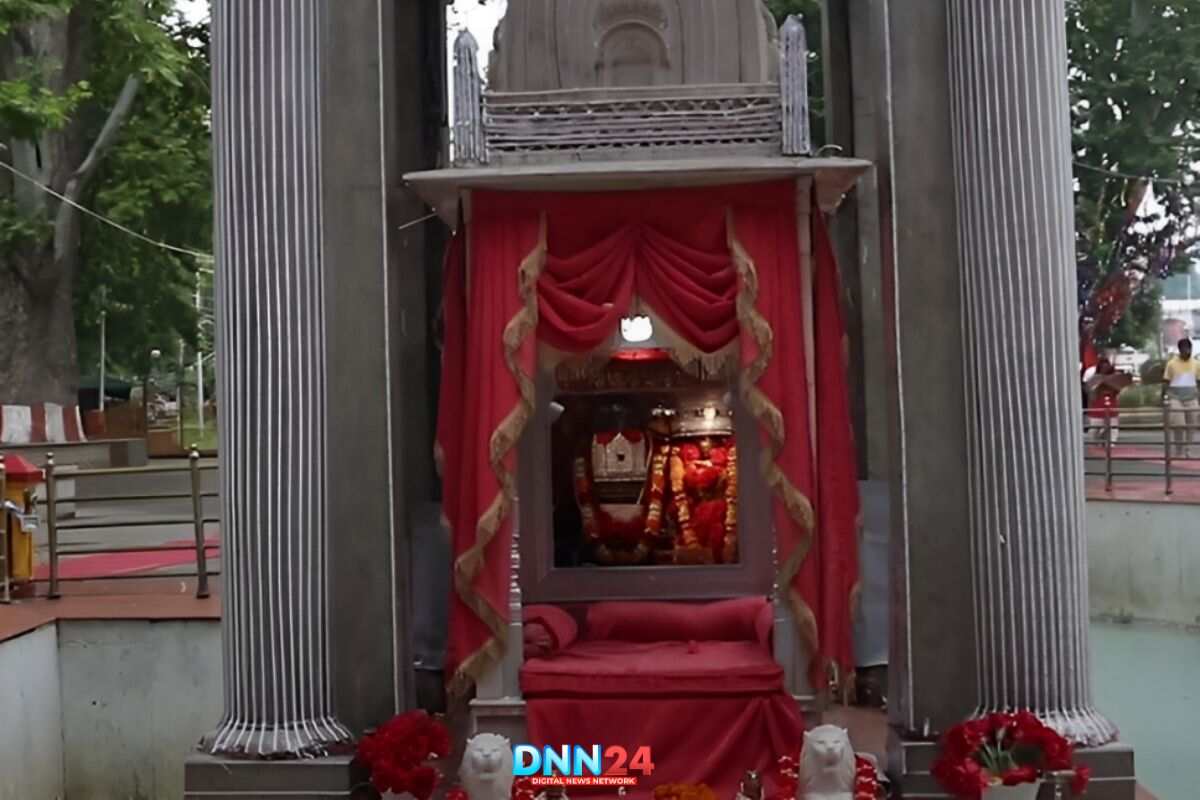Nestled in the picturesque village of Tullamulla in Kashmir’s Ganderbal district, the Mata Kheer Bhavani temple stands as a testament to India’s rich spiritual heritage. This ancient shrine, dedicated to Goddess Ragnya Devi (an incarnation of Durga), is built over a sacred spring believed to possess miraculous properties.The temple’s heart is a serene water body surrounded by smooth stones and ancient chinar trees. Pilgrims from across India gather here, sitting or resting on grass mats under the shade of these majestic trees. The air is filled with the sound of conch shells and devotional chants, creating an atmosphere of profound spirituality.
Mata Kheer Bhavani: From Lanka to Kashmir
According to ancient beliefs, the goddess once resided in Sri Lanka, where she was worshipped by King Ravana. However, when Ravana abducted Sita, the goddess became displeased and decided to leave. Some say she chose Kashmir as her new home, while others believe Lord Hanuman, on divine instruction, brought her idol to this tranquil spot in the Himalayas.The name “Kheer Bhawani” comes from the tradition of offering kheer (a sweet rice pudding) to the goddess. This unique custom has been maintained for generations, making it an integral part of the temple’s identity and rituals.

Mystical Changing Waters
Perhaps the most intriguing aspect of the Kheer Bhawani temple is its sacred spring, known for changing colours. Devotees and locals alike believe that these colour changes are prophetic, reflecting the state of the world and foretelling future events. A serene green or blue is considered auspicious, while darker shades like red or black are seen as warnings of impending difficulties. During the COVID-19 pandemic, for instance, the water reportedly turned black for two years before returning to a more favourable hue.
Haven of Communal Harmony
The Kheer Bhavani temple is not just a place of worship; it’s a symbol of Kashmir’s syncretic culture. During the bi-annual fairs held on Jyestha Ashtami and Ashadha Ashtami, people from all faiths come together in celebration. In a heartwarming display of brotherhood, local Muslims often set up stalls to assist Hindu pilgrims, embodying the spirit of unity that is quintessentially Indian. This harmonious coexistence serves as a powerful reminder of the shared cultural heritage that binds the diverse communities of Kashmir.
Temple’s Historical Journey, Rituals and Devotion
While the spiritual origins of Kheer Bhavani are lost in antiquity, the current temple structure has a more recent history. Maharaja Pratap Singh commissioned its construction in 1912, and later, Maharaja Hari Singh undertook renovations to enhance its beauty and facilities.The temple finds mention in Kalhana’s Rajatarangini, a 12th-century historical chronicle of Kashmir. Kalhana describes the sacred spring of Tula Mula (as it was then known) and its significance to the Brahmins of Kashmir. Devotees visiting Kheer Bhavani engage in various rituals to seek the goddess’s blessings. The offering of kheer is central to the worship, symbolising purity and devotion. Many pilgrims also light diyas (oil lamps) and incense sticks, creating a fragrant and luminous atmosphere around the spring. The temple priests, like Pandit Kulbhushan, play a crucial role in maintaining the traditions and guiding devotees through the proper rituals. Their deep knowledge of the temple’s history and significance adds to the spiritual experience of visitors.

Beacon of Faith in the Valley
The Kheer Bhavani temple stands as a beacon of faith, harmony, and cultural richness in the Kashmir Valley. Its unique features – the colour-changing spring, the offering of kheer, and the coming together of diverse communities – make it a truly special place of worship.As pilgrims from across India continue to visit this sacred site, they not only seek divine blessings but also contribute to the preservation of a centuries-old tradition. In doing so, they reaffirm the enduring spirit of unity and devotion that has long characterised India’s spiritual landscape.The Kheer Bhavani temple reminds us that faith has the power to transcend boundaries, bringing people together in shared reverence and mutual respect. It stands as a living testament to Kashmir’s rich cultural tapestry and the enduring power of spirituality to foster peace and understanding.
Also Read:Angshuman Thakur’s Tree School:Where Nature Nurtures Learning
You can connect with DNN24 on Facebook, Twitter, and Instagram and subscribe to our YouTube channel.

